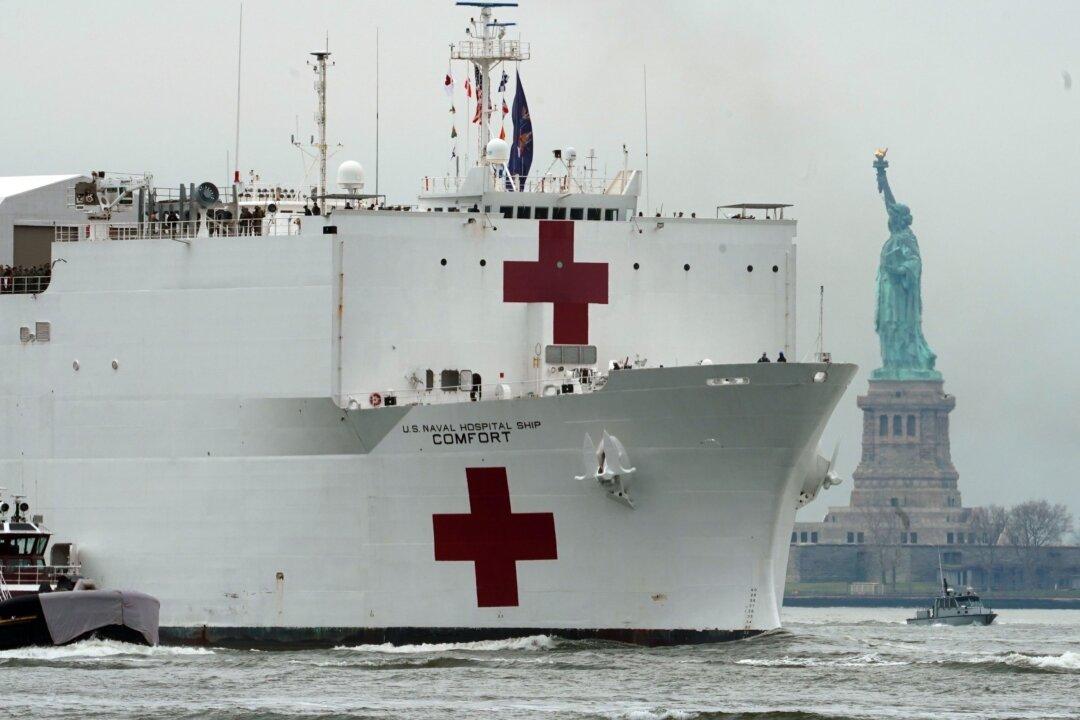The 1,000-bed hospital ship USNS Comfort sailed up the Hudson River on March 30 and moored at Pier 90 in New York City, where non-COVID-19 patients will be treated to ease pressure on city hospitals that are overwhelmed by the CCP virus pandemic.
The U.S. Navy ship had sailed several days ahead of schedule from Norfolk, Virginia, where it was undergoing maintenance when the pandemic reached U.S. shores.





